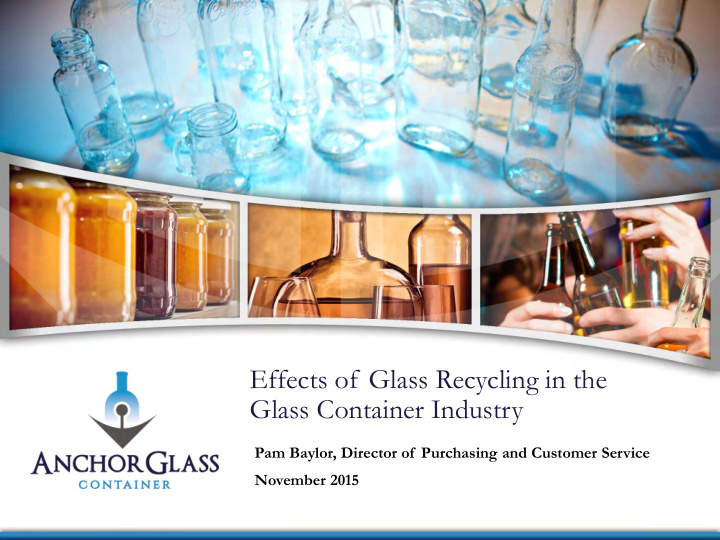



Effects of Glass Recycling in the Glass Container Industry Pam Baylor, Director of Purchasing and Customer Service November 2015
Anchor Glass Container Locations 2
Cullet Impact By Location • Elmira, NY • Bottle Bill cullet excellent quality excess suppliers in the region • Shakopee, MN • Processed cullet and local bottle return we have our own processor • Issues exist with purchased processed cullet • Jacksonville, FL • Brewery return cullet very clean • Processed cullet – major quality issues • Henryetta, OK • Processed cullet – quality issues • Local cullet processors no quality issues • Warner Robins, GA • Good clean cullet from the East Coast BB region • Processed cullet – quality issues • Lawrenceburg, IN • Produces own cullet purchases very little from industry 3
Benefits of Using More Cullet • Positives • Requires less energy to melt than raw material • 100% recyclability (no wasted material) in the melting & forming process • Lower furnace emissions and temperatures • Reduces material going to landfills • Obstacles • Contamination in recycled glass (cullet) supply causes imperfections in glass containers • Container rejects due to “stones” • Lost production efficiency • Increased accident potential from glass-related injury • Difficult to identify & reject incoming cullet supply • Difficult to prevent all contamination related defects from reaching our customer. 4
Cullet Contamination • Types of Contamination • Ceramics (Coffee Cups, Dinner Plates) • Opal Borosilicate • Hi temp cookware/Corelle, Visionware • Non-Ferrous Metal • Copper, Stainless Steel, Aluminum • Bottle Crowns (caps) • Medical Waste • Cullet Specifications • Spent needles • ½ inch in size or larger • No ceramics/Opal Borosilicates Stones can be very small and hard to detect • No plastic due to size and location in the container. • No metals • No medical waste • Properly color sorted cannot exceed specs in other colors 5
www.anchorglass.com
Recommend
More recommend